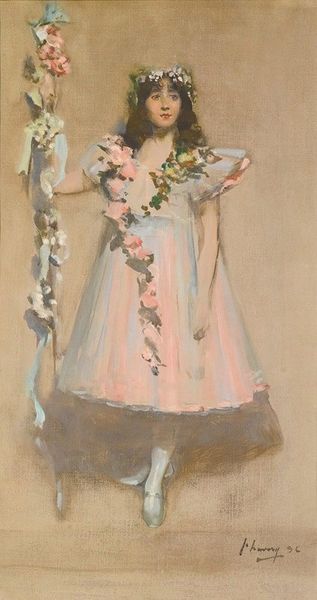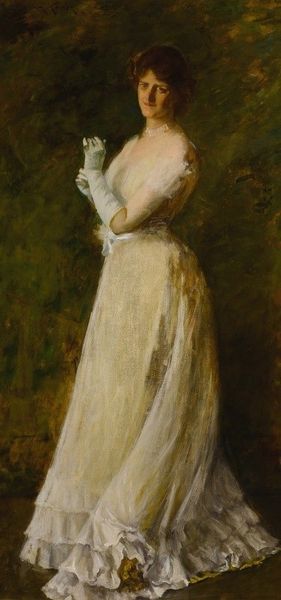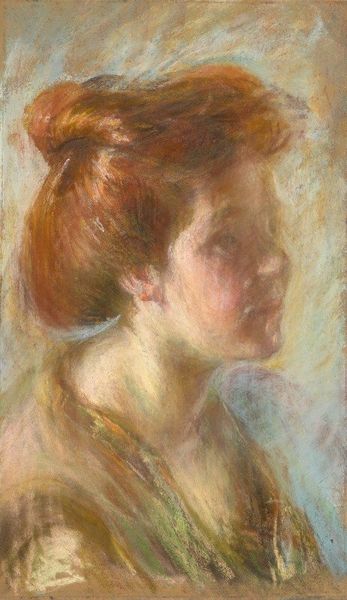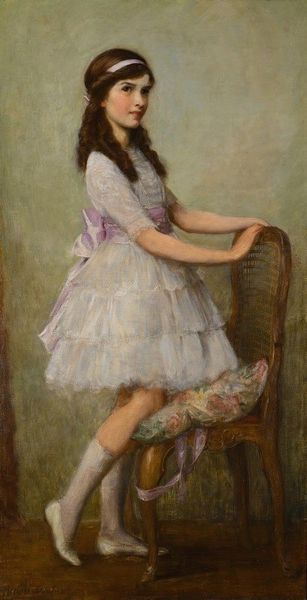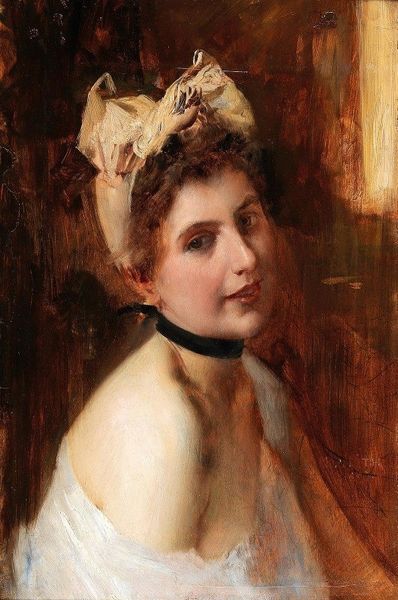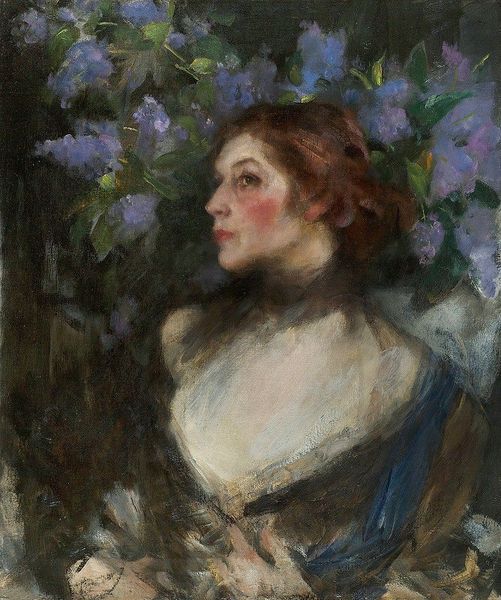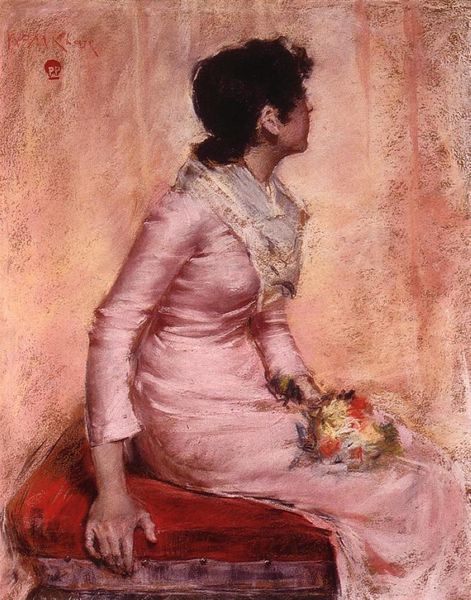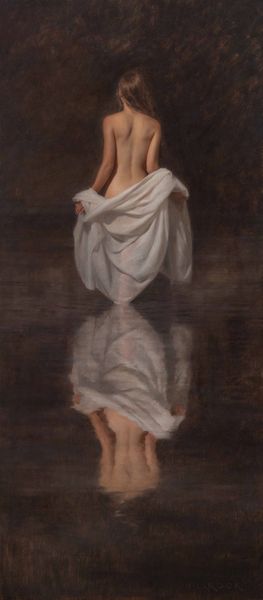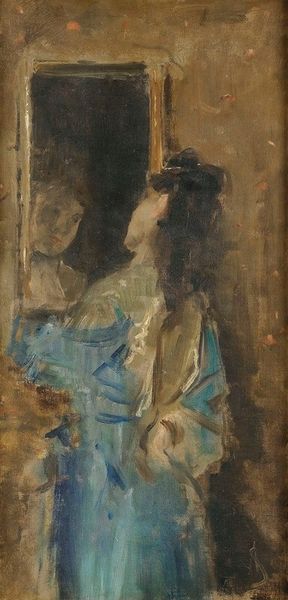
Copyright: Public Domain: Artvee
Curator: Ah, here we have John Singer Sargent's "Rosina," painted in 1878 using oil paints. It's a rather captivating piece, isn't it? Editor: Captivating indeed. The first thing that strikes me is how…unfinished it seems. The background fades into nothingness, drawing all attention to the figure. It exudes a light, almost playful mood. Curator: The looseness of the brushwork is certainly key. Sargent was heavily influenced by Impressionism, you know, prioritizing capturing the fleeting moment, the impression, rather than photographic detail. Editor: Precisely. And it’s not merely capturing light, it’s capturing a societal moment as well. Sargent painted this when he was studying in Paris. The city teemed with models and performers, many of whom took on Italian personas to cater to the Parisian taste for the exotic. "Rosina" seems to participate in that romanticized depiction. Curator: I agree. Observe how the cascading curls soften her profile and frame her face. The almost chaotic texture of the hair creates a delightful contrast against the smooth planes of her face. Consider also how the dress emphasizes the dynamism; notice the roses seem as though they are on the brink of sliding off her shoulder, creating motion. Editor: It’s interesting you point out the roses. Beyond their aesthetic contribution, they carry weight socially. Flowers, in 19th century portraiture, frequently signaled wealth and beauty, often framing the sitter within acceptable societal standards of beauty. "Rosina" flirts with this standard, acknowledging beauty, while simultaneously presenting an image of perceived Italian free-spiritedness. Curator: Quite so! And her enigmatic smile—so fleeting it's almost a shadow. Sargent manages to convey a depth of character through remarkably economical means. The interplay of light and shadow shapes not just her form, but her presence, in the space. Editor: Sargent gives us a portrait that both conforms and subtly questions the art world’s exoticist tendencies during the period, offering us both a portrait of a woman and a study into the role imagery played in crafting cultural perceptions. Curator: A nuanced observation indeed. It serves as a powerful example of Sargent’s capacity to evoke so much with such skillful efficiency, leaving an indelible impression on our understanding of portraiture, of light and form. Editor: And more profoundly, Sargent allows us a peek into how the sausage of social constructs were made and, even today, continue to shape how we consume portraiture and perceive the communities it claims to capture.
Comments
No comments
Be the first to comment and join the conversation on the ultimate creative platform.
